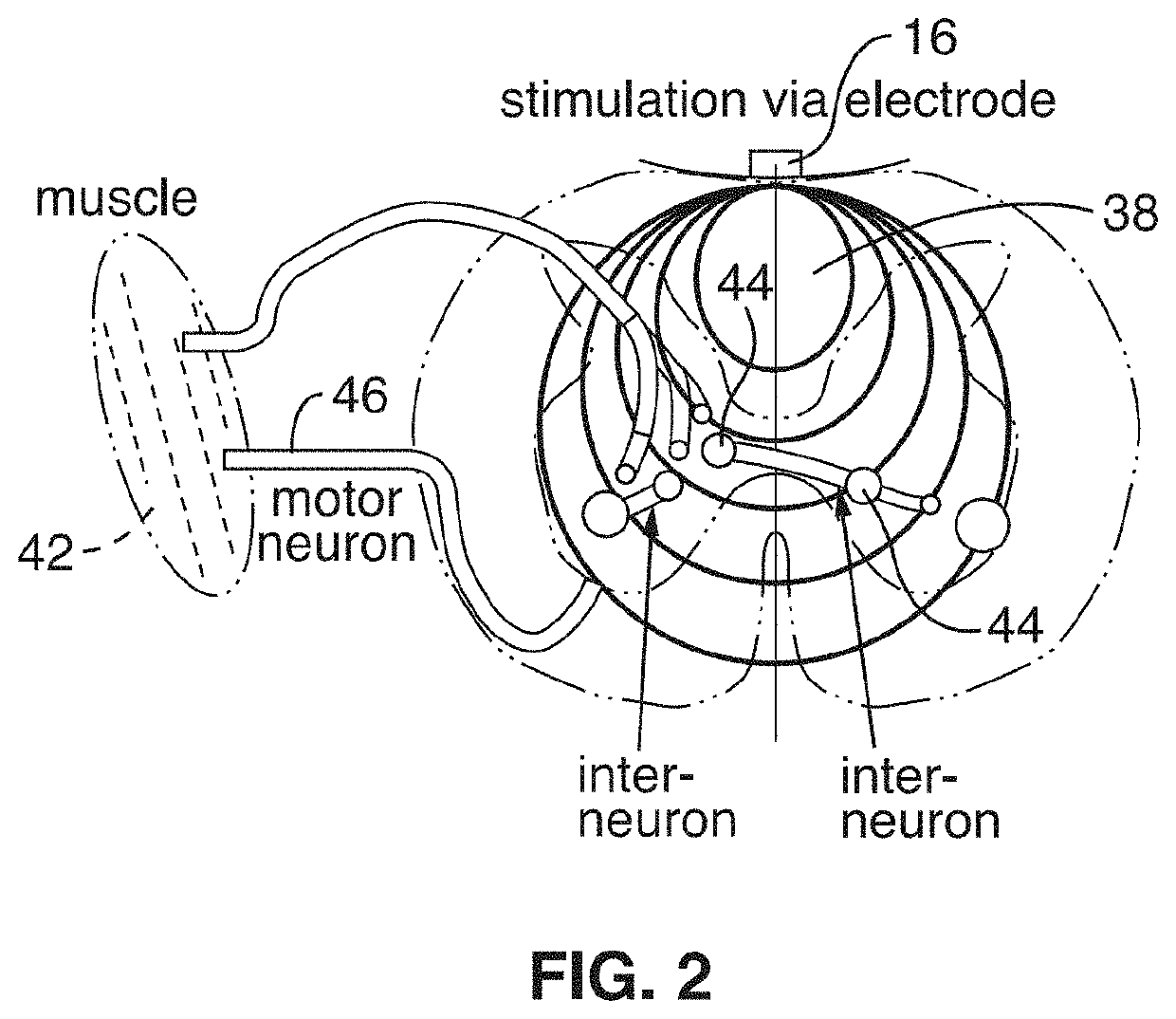Wireless implant for motor function recovery after spinal cord injury
a technology of spinal cord injury and implanted electrodes, which is applied in the field of implantable stimulation devices to achieve the effect of improving the stimulation efficacy and quality of the subject's movement, and improving the stimulation efficiency and efficacy
- Summary
- Abstract
- Description
- Claims
- Application Information
AI Technical Summary
Benefits of technology
Problems solved by technology
Method used
Image
Examples
example 1
[0086]FIG. 18A through FIG. 22 illustrate an experiment testing an exemplary prototype of system of the present description on a paralyzed rat. The prototype incorporated a SoC 15 implemented in HV 0.18 μm CMOS with an area of 5.7×4.4 mm2. The prototype integrated 172 epidural electrodes, four EMG wire electrodes, two coils, six 0201-SMD capacitors, and the SoC into a 0.7 g, 0.5 cm3 package.
[0087]FIG. 18A and FIG. 18B are plots illustrating electrode characterization with respect to cycle voltammetry and stability, respectively. Cyclic voltammetry characterization shows the fabricated epidural electrode has a charge storage capacity of 6.74ρC. The electrode in-vivo test results demonstrate <1.5 kΩ impedance standard deviations during the 52-day post-surgery period.
[0088]FIG. 19 shows a plot of simultaneous stimulation recording data telemetry. The LSK data rate was set to 0.5 Mb / s for illustration purposes. Stimulus #1 was anodic first, 0.25 mA, 0.25 ms pulse width (40 kΩ load resis...
PUM
 Login to View More
Login to View More Abstract
Description
Claims
Application Information
 Login to View More
Login to View More - Generate Ideas
- Intellectual Property
- Life Sciences
- Materials
- Tech Scout
- Unparalleled Data Quality
- Higher Quality Content
- 60% Fewer Hallucinations
Browse by: Latest US Patents, China's latest patents, Technical Efficacy Thesaurus, Application Domain, Technology Topic, Popular Technical Reports.
© 2025 PatSnap. All rights reserved.Legal|Privacy policy|Modern Slavery Act Transparency Statement|Sitemap|About US| Contact US: help@patsnap.com



